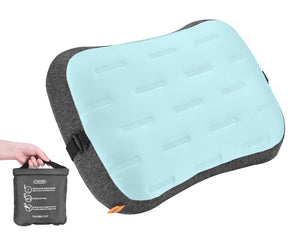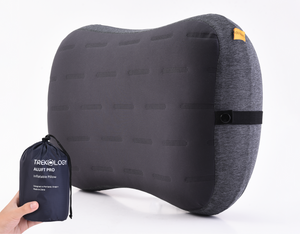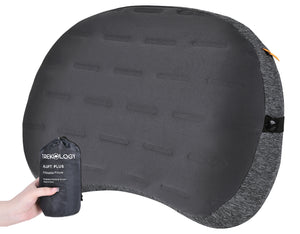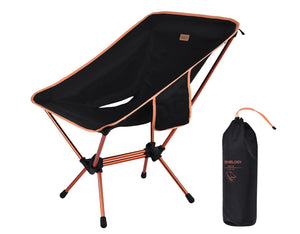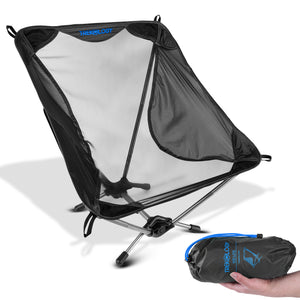
As a beginner, the prospect of winter hiking might seem a bit daunting, but fear not! With the right gear, you can transform a chilly trek into a comfortable and enjoyable adventure. In this comprehensive guide, we'll walk you through the essential winter hiking gear that every beginner should consider, ensuring you're well-equipped to tackle the frosty trails and make the most of the season's breathtaking landscapes.
Related: 10 Winter Hiking Tips For Beginners
From insulated layers to traction devices, we've got you covered with all the necessary tips and recommendations to turn your winter hiking dreams into a reality. So, bundle up and join us on this journey to discover the perfect cold weather hiking gear for your winter escapades!
1) Winter Hiking Boots

Photo by freestocks on Unsplash
Embarking on a winter hiking adventure begins with the right foundation – your boots. Opt for insulated winter hiking boots to shield your feet from the dual threats of cold and moisture. Insulation is crucial, as it traps heat and keeps your feet warm in chilly temperatures. Thinsulate or PrimaLoft are popular insulation materials that strike a balance between warmth and bulk, ensuring your boots remain comfortably lightweight.
When selecting winter hiking boots, you should also consider their waterproofing capabilities. GORE-TEX and similar membranes offer reliable water resistance, preventing melting snow or unexpected puddles from seeping into your boots. Additionally, look for boots with sturdy and slip-resistant soles to navigate icy trails with confidence. It's wise to invest in boots that provide ankle support, reducing the risk of twists or sprains on uneven terrain.
Related: 10 Best Winter Hiking Boots Of 2023-2024
Now, let's talk about socks. As a crucial layer between your feet and the boots, socks play a pivotal role in maintaining warmth and preventing blisters. Opt for moisture-wicking thermal socks that keep sweat away from your skin, reducing the likelihood of cold feet. Bring an extra pair to change into if your feet get damp during your hike. Remember, happy feet make for an enjoyable winter hiking experience!
Related: Best Winter Hiking Socks Of 2023
2) Layered Clothing

Photo by Becca Tapert on Unsplash
Dressing in layers is a strategic approach to managing your body temperature during winter hikes. Start with a moisture-wicking base layer that efficiently draws sweat away from your skin, preventing discomfort caused by damp clothing. Merino wool and synthetic materials are excellent choices for base layers. Over this, add an insulating layer like fleece or down to trap and retain body heat. The outer layer should be windproof and waterproof to shield you from the elements, especially if you encounter unexpected snowfall or rain.
Opt for a winter hiking jacket with ventilation options, such as underarm zippers, to regulate your body temperature as you exert yourself. Adjustable cuffs and hems allow you to seal in warmth, while a breathable outer layer prevents overheating. The key is to adapt your layers according to the weather conditions and your level of exertion. Carry an extra insulating layer in your backpack to put on during breaks, ensuring you stay comfortably warm throughout your winter hike.
Related: Beginners Guide To Layering For Winter Hiking
3) Warm Hat and Gloves

Photo by mohammed idris djoudi on Unsplash
In winter, a substantial amount of body heat escapes through the head, making a warm hat a non-negotiable item. Choose a winter hiking hat that covers your ears for maximum warmth, and consider one with moisture-wicking properties to manage perspiration. Beanie-style hats made from materials like fleece or wool are popular choices. When selecting winter gloves, prioritize insulated options that keep your fingers warm without sacrificing dexterity. Look for gloves with touchscreen compatibility, allowing you to use your phone without exposing your hands to the cold.
Consider bringing an extra pair of gloves in case the first pair gets wet. Wet gloves can quickly sap away body heat and lead to discomfort. Additionally, waterproof or water-resistant gloves are a smart choice for added protection in snowy conditions. A glove liner made of a moisture-wicking material can enhance warmth and comfort. Remember, keeping your extremities warm is crucial for an enjoyable and safe winter hike.
Related: How to choose your winter hiking gloves?
4) Winter Hiking Pants

Photo by mohammed idris djoudi on Unsplash
When it comes to winter hiking, choosing the right pants is crucial for comfort and protection against the elements. Unlike regular hiking pants, winter hiking pants are designed to provide insulation, keep you dry, and protect against cold winds. Look for pants made from water-resistant or waterproof materials to shield you from snow and rain. Additionally, pants with built-in insulation or the option to layer underneath will keep your legs warm in chilly temperatures.
Opt for pants with reinforced knees and seat areas, as these high-wear zones are more susceptible to abrasions and moisture. Many winter hiking pants also feature ventilation options, such as zippered vents, to regulate body temperature during periods of intense activity. Elastic cuffs or gaiters at the bottom of the pants can effectively seal out snow, preventing it from entering your boots. Consider pants with an adjustable waistband for a customized fit, ensuring comfort throughout your winter adventure. Remember that a proper fit is essential to allow freedom of movement while accommodating additional layers underneath when needed.
Related: How to choose hiking pants?
5) Backpack With Essentials

Photo by Chaewul Kim on Unsplash
Your backpack is not just a vessel for carrying your belongings; it's your lifeline on the trail. Begin by selecting a winter hiking backpack with sufficient capacity to carry all your essentials comfortably. Look for one with adjustable straps and a padded hip belt for optimal weight distribution, reducing strain on your back during extended hikes.
In your winter hiking backpack, prioritize essentials like water and snacks to stay hydrated and fueled. Opt for an insulated water bottle to prevent liquids from freezing in colder temperatures. Pack nutrient-dense snacks that won't freeze, such as energy bars, nuts, and dried fruits. Consider bringing a thermos filled with a warm beverage to boost your morale and help maintain body heat. Include a well-stocked first aid kit tailored to winter conditions. Items such as blister pads, pain relievers, and hand warmers can be crucial in unexpected situations. A multi-tool or a small knife may come in handy for various tasks, from cutting tape to fixing gear issues on the trail.
And remember to organize your backpack thoughtfully, placing frequently used items in easily accessible pockets. Pack heavier items closer to your back for better balance. Use compression straps to secure your load and prevent it from shifting during the hike.
Related: How to choose a backpack for hiking and backpacking?
6) Trekking Poles

Trekking poles are not just for seasoned hikers; they are a game-changer for anyone navigating winter trails. These lightweight and adjustable tools provide invaluable support, especially when trekking through snowy or icy terrain. Equipped with ergonomic handles and sturdy wrist straps, trekking poles enhance stability and balance, reducing the risk of slips and falls on slippery surfaces.
When selecting trekking poles, consider those with adjustable lengths to accommodate varying terrains. Shorten them for uphill climbs and lengthen them for descents. Some poles even come with integrated shock absorbers, easing the impact on your joints with each step. As an added bonus, trekking poles can be a lifesaver when crossing streams or negotiating uneven paths. To maximize their effectiveness, plant the poles firmly with each step and use them to test the stability of the ground ahead. With the right technique, trekking poles become an extension of your body, making your winter hike safer and more enjoyable.
Remember to check the conditions of the terrain you'll be traversing. In deep snow, attach snow baskets to the trekking poles to prevent them from sinking. And if you encounter icy patches, some poles come with attachments like spike tips for enhanced grip. Investing in quality trekking poles ensures you have a reliable support system that can significantly enhance your winter hiking experience, making it not just a walk in the snow but a confident stride through winter's wonderland.
Related: How to clean and maintain trekking poles?
7) Snow Gaiters
Snow gaiters are unsung heroes in the winter hiker's arsenal, forming a protective barrier between your boots and the elements. These waterproof and breathable coverings wrap around your lower legs and the tops of your boots, preventing snow, water, and debris from entering. They are particularly useful when navigating deep snow or trudging through areas with dense underbrush.
When putting on snow gaiters, ensure a snug fit to prevent any gaps where snow could sneak in. Look for gaiters with durable, reinforced materials at the bottom to withstand contact with rough terrain. Many models come with adjustable straps and buckles to secure them in place, and some even feature reflective elements for added visibility in low-light conditions. Whether you're a beginner or an experienced hiker, incorporating snow gaiters into your winter gear ensemble will significantly enhance your comfort and protection on the trail.
Related: How to choose and use gaiters?
8) Headlamp or Flashlight

Photo by Joshua Gresham on Unsplash
Navigating winter trails in low-light conditions requires a reliable light source, making a headlamp or flashlight a crucial piece of gear. Choose a headlamp with adjustable brightness levels to conserve battery life and adapt to different lighting needs. Ensure it has a waterproof rating, as winter conditions may include snow or sleet. It's wise to carry spare batteries in a waterproof container to avoid being left in the dark. Additionally, consider a headlamp with a red-light mode; this preserves night vision and minimizes the disturbance to fellow hikers.
During winter hikes, the early onset of darkness means your light source is your lifeline. Practice using your headlamp or flashlight before hitting the trail, familiarizing yourself with its settings and beam distance. Keep the light easily accessible in your backpack, and periodically check the batteries to ensure they are in good condition. A well-maintained light source is not just for emergencies but also enhances the overall experience of a winter hike, allowing you to appreciate the beauty of your surroundings even as the sun sets.
Related: How to choose a headlamp?
9) Thermal Socks

Photo by Nathan Dumlao on Unsplash
When it comes to winter hiking, keeping your feet warm and dry is paramount, and thermal socks play a crucial role in achieving this. Invest in high-quality, moisture-wicking thermal socks designed specifically for cold weather. Consider a blend of materials like merino wool for insulation and breathability. Merino wool naturally wicks away moisture, preventing sweat from accumulating and causing discomfort.
Proper footwear and sock combination is essential for preventing blisters and maintaining warmth. Ensure your thermal socks fit snugly but not too tight, as compression can restrict blood flow and decrease insulation. It's advisable to carry an extra pair of thermal socks in your backpack, especially on longer hikes. If your feet get wet during the journey, changing into dry socks can make a significant difference in your comfort level. Remember, happy feet make for a happy winter hiking experience!
Related: What kind of socks to wear for hiking?
10) Emergency Shelter
In the unpredictable conditions of winter, having a lightweight emergency shelter is a wise precaution. Options include emergency bivy sacks, space blankets, or compact tents designed for quick setup. Choose a shelter that is easy to carry and set up, providing protection against wind and cold temperatures. It can serve as a crucial refuge if you find yourself stranded due to unexpected weather changes or other emergencies.
Familiarize yourself with the setup of your emergency shelter before heading out on the trail. Practice assembling it in controlled conditions to ensure you can quickly and efficiently deploy it if needed. Remember that even a brief stop in extreme cold can lead to discomfort or, in severe cases, hypothermia. Having an emergency shelter in your backpack adds a layer of safety and can make a significant difference in your ability to weather unexpected challenges during a winter hike.
Related: How to build emergency winter shelters?
11) Sunglasses

Photo by Karsten Winegeart on Unsplash
Don't underestimate the power of a good pair of sunglasses when heading out for a winter hike. The snow-covered landscape reflects the sun's rays, creating a dazzling and potentially harmful glare. For beginners, investing in a pair of sunglasses designed for winter activities is crucial. Look for sunglasses with UV protection to shield your eyes from the sun's harmful rays. Polarized sunglasses are also beneficial, as they help reduce glare, making it easier to see the terrain and avoid hazards like ice patches.
Besides protecting your eyes from the sun, sunglasses can also provide a barrier against the biting cold wind. The winter breeze can be harsh on your eyes, leading to discomfort and even temporary vision impairment. A well-fitted pair of sunglasses acts as a windbreak, keeping your eyes comfortable and allowing you to focus on the beauty of the winter landscape without squinting. When choosing sunglasses, opt for a design that covers your eyes well, providing maximum protection against both the sun and the elements. With the right pair, you'll not only enhance your visual experience but also ensure the safety and well-being of your eyes during your winter hikes.
Related: How to choose sunglasses for hiking?
12) Navigation Tools

Photo by Annie Spratt on Unsplash
Winter landscapes can transform familiar trails, making navigation challenging. Having reliable navigation tools is crucial for staying on course and finding your way in changing conditions. A detailed map of the trail, coupled with a compass or a GPS device, forms a powerful combination. Choose a topographic map that highlights key features and elevations, aiding in better route planning.
Before embarking on your winter hike, familiarize yourself with the map and the trail's landmarks. Note key points such as trail junctions, water sources, and notable terrain features. Check your compass or GPS device to ensure they are functioning correctly and have sufficient battery life. Keep in mind that electronic devices may experience faster battery drainage in cold temperatures, so carry spare batteries or a power bank.
During the hike, regularly cross-reference your location with the map and use the compass or GPS device to confirm your heading. Pay attention to trail markers and any distinctive features to maintain your bearings. If you encounter unexpected changes in weather or visibility, having well-practiced navigational skills becomes even more critical. By mastering these tools, you enhance your ability to enjoy the winter scenery while confidently exploring the great outdoors.
Related: How to use a compass and map?
Conclusion

Photo by Fabrizio Conti on Unsplash
As we've explored in this comprehensive guide, the right winter hiking gear is the key to a safe and enjoyable experience in the great outdoors. From insulated layers to traction devices, each item on our winter hiking gear list plays a crucial role in keeping you warm, dry, and secure on the trail. By investing in quality winter hiking gear and adhering to safety guidelines, you'll find that the colder months offer a unique and breathtaking perspective on nature.
Hungry for more?
